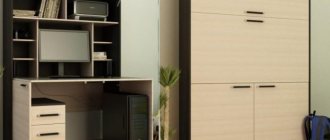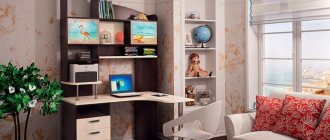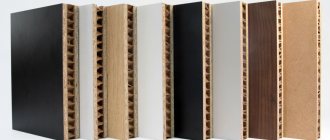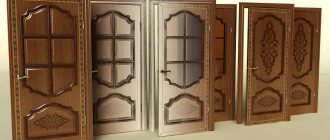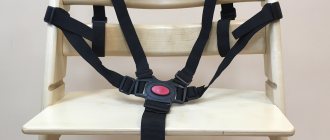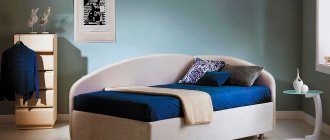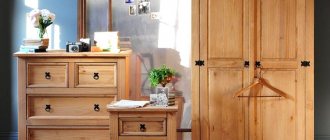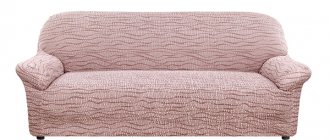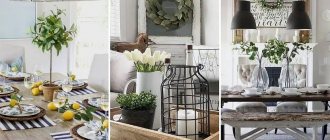Over the centuries, the card table has evolved from a purely utilitarian item into a stylish interior decoration. Now they not only play behind it, but also have tea parties or lunch. You can make a practical option for poker or preference yourself.
Types of card tables.
Initially, card tables were used exclusively for playing cards.
Combination with the interior
Gaming tables can seamlessly fit into any style thanks to their versatility, acquired through their modernization.
This is especially true for custom-made furniture, since you can initially indicate your wishes based on its appearance. The main thing when choosing is to take into account the design of the room in which the table will be located:
- antique models made of wood will fit perfectly into the classical style, as well as Empire or Baroque;
- metal tables with plastic additions will decorate a more modern apartment, designed for modern or high-tech;
- lovers of unusual things can order a minimalist gaming piece of furniture with a chessboard pattern applied to its entire surface.
The variety of materials on the market makes it possible for everyone to purchase such a piece of furniture for their home. It is advisable not to deviate from the history of its origin and be sure to equip it with a field for card games. Restoring old furniture would also be a good option; this will allow you to breathe new life into the table and make it exclusive. Even in a modern home, such antiques always look interesting.
Getting to know the history of the card table helps you immerse yourself in the atmosphere of the past and acquire a truly interesting device. Its special qualities, such as versatility and compactness, will forever remain unchanged advantages. And modern versions of the models will fit perfectly into the existing interior.
Spanish "Ombre"
Remember the history of Spain and its Golden Age? Until the mid-16th century, the Spanish Empire actively expanded its colonies, and the noble class knew how to not only fight, but also have fun. The card game ombre was very popular in the country, where two players fought against a third.
There were no special tables for ombre at that time. The Spaniards played at ordinary tables and did not even suspect that thanks to the name of the game they had invented a new type of furniture. From the middle of the 16th century, the power of the empire was shaken, and in the conditions of economic decline, the Spanish nobles had no time for games and tables, but ombre continued its triumphant march across Europe.
Combination with the interior
Do-it-yourself coffee table: made of chipboard, wood and other colleague materials
Thanks to the variety of types, configurations and materials used, you can choose the right model for any interior. The main condition is that the card table must be combined with the overall design of the room and the rest of the furniture. When choosing a product, it is necessary to take into account the characteristic features of each style:
- For classics, empire style and baroque, furniture made from precious wood remains a win-win option.
- For a modern interior, decorated in a high-tech or modern direction, it is better not to purchase vintage items, but to give preference to tables made of plastic, glass and metal.
- Compact tables on one leg will fit perfectly into a minimalist interior. They take up little space and are easy to transport. The colors of such products can be either monochromatic or unusual.
Some folding structures are given different designs, and therefore the piece of furniture can completely change during transformation. The card table is also made to order according to your own sketches. Exclusive furniture made from relatively inexpensive materials is given a luxurious look using special processing techniques.
If you want to surprise your guests, a card table, decorated in an antique or modern style with a double tabletop, will be a winning option. This element adds unusualness to the interior. Among the variety of types, you can choose not only a beautiful, but also a functional option.
ClassicBaroque
Modern style
Minimalism
What materials is it made from now?
In the old days, gaming tables were made only from wood, but now the list of materials has expanded significantly.
In budget products, instead of solid wood countertops, laminated chipboard or MDF is used. Such models do not tolerate changes in humidity and temperature well, so they are suitable only for residential premises with the most comfortable conditions.
Wood massif
Today, solid wood tables are considered premium products. This good quality, durable furniture looks noble. Most often it is performed in Empire, Baroque or Classicism styles, harmoniously combined with a classic interior.
The option for installation in the kitchen has a wooden countertop and a metal frame. Most of these models are equipped with drawers.
Antique tables are the most expensive. Such a product can be purchased at an antiques exhibition.
Metal
The metal product looks good in a high-tech interior. Often a frosted glass tabletop is placed on a chrome frame.
Models with 1 leg look interesting. They are lighter than traditional ones, so they can be easily moved to another place.
PVC
Plastic gaming tables are the cheapest. A new product looks beautiful, but its attractiveness is quickly lost due to scratches and deformations.
PVC models have 3 advantages:
- light weight;
- wide range of colors;
- the ability to imitate the surface of any natural material.
They produce tables imitating wood, marble, and granite. Among the plastic models it is easy to find one suitable for any interior.
There are also combined products - with a PVC tabletop on a metal frame.
What does it look like
What is artificial rattan and what kind of furniture is made from it?
Card tables have many modifications. The main types include the following:
- Folding type products. Additional parts are attached to the sides, which can rise and significantly increase the surface area.
- Sliding options. The surface usually consists of two parts that move apart to the sides. You can add an additional element to the central part.
- Transformers. In this design, the tabletop can easily be turned over and turned into a coffee table or kitchen table. This is possible due to the fact that one side is covered with cloth, while the other remains smooth.
Design Features
What is a wardrobe
The card table is a rather miniature structure created specifically for the game. This furniture has a number of positive characteristics that make it stand out among ordinary tables:
- symmetrical tabletop - a surface is made with equal proportions so that the players sitting behind it are located at the same distance from each other;
- lack of crossbars - to make it comfortable to sit at a small table, there are no fastenings between the legs;
- the playing surface of the structure is covered with fabric so that the cards do not slip;
- classic models are made of wood and decorated with carved elements, which looks very expensive and luxurious;
- drawers - many products provide drawers for storing small items, the standard quantity is 1-2 pieces.
Initially, card tables were produced exclusively for playing cards, checkers, chess, and backgammon. Over time, the design was improved and modified. The main characteristics remain the same, but modern models are more functional and can be used, for example, as coffee tables.
A relative disadvantage of this model is the fact that it is quite difficult to fit into a modern interior. The owner will have to try to ensure that the product is harmoniously combined with the rest of the furnishings. Otherwise, the table will stand out from the overall picture of the room’s design.
Making a poker table with your own hands
A homemade table for playing cards is not as beautiful as its elegant designer counterparts, but it is more practical and cheaper.
Card table design
The creation process begins with the development of a sketch.
At this stage you need to choose:
- tabletop shape;
- product size.
The first depends on the expected number of players. Most often, poker tables are made 6- or 8-sided.
When choosing a size, you should listen to the recommendations of the Russian Sports Poker Federation.
Drawing of a card table.
The following parameters are considered optimal here:
| Number of players | Playing field size, mm | Table dimensions |
| 10 | 1185x2430 | 1400x2680 |
| 7 | 1050x2000 | 1250x2200 |
The height is the same - 750-800 mm.
The table top is covered with soft material to make it easier to take cards. The legs are made removable. After the game, such a table can be disassembled and placed in the storage room.
Selection of materials
To make furniture you will need:
Plywood sheets 4, 10 and 21 mm thick
Green cloth
Izolon (foamed polyethylene)
Underlay for laminate
Faux leather
Laminated fibreboard trim with a rounded front part (2 pcs.)
Laminated fibreboard trim with a straight front part (2 pcs.)
Laminate flooring
Removable legs (available at furniture stores)
Glue
Self-tapping screws
Staples
Octagonal table
This model has a wooden frame and a soft armrest. The playing field is covered with cloth.
The length of the side is 50 cm, the dimensions of the tabletop are approximately 1250x1250 mm.
Step-by-step instruction:
- An octagonal tabletop is cut from a 21 mm thick plywood sheet.
- Screw the base for the supports to it with self-tapping screws.
- Screw the legs.
- An octagonal playing field with dimensions 200 mm smaller than the tabletop is cut out of a 10 mm thick plywood sheet.
- The backing for the laminate is laid on it and fixed with a construction stapler.
- Lightly moisten the cloth and stretch it onto the field.
- A 4 mm thick plywood edging is attached around the perimeter of the table top.
- Laminate is placed on top of it.
- An armrest is cut out of 10 mm thick plywood.
- A rounded casing is attached to it from above, and a straight one from the end. To cut the second part at the desired angle, use a miter box.
- The armrest is covered with isolon. The outer part of the polyethylene foam is attached to the end of the casing, the inner part is wrapped so that the structure can be put on the table.
- Artificial leather is stretched over the isolon, stitching its edges or fastening with a stapler. The seams are covered with fragments of the same material.
- Place the playing field in the center of the tabletop, then screw the armrest to it.
Video
DIY octagonal poker table
Making your own octagonal poker table
Hexagonal card table
This is a more beautiful option.
It is made in the following sequence:
- From sheets of plywood 21 mm thick, 2 hexagons with a diagonal of 100 cm are cut out.
- The pedestal is made from the same material.
- They make a structure for fixing the tabletop, which is put on the podium.
- One of the hexagons is attached under the base of the tabletop.
- From sheets of plywood 21 mm thick, 2 hexagons with a diagonal of 150 cm are cut out.
- A hexagonal shield is cut out in one of the parts.
- Using pre-applied markings, openings for glasses and chips are cut out, the edges are processed with a router and polished.
- The edges of the table top are treated in the same way.
- They make a playing field and cover it with batting.
- Then - vinyl fabric (can be replaced with artificial leather).
- The base is fixed - a hexagon with a diagonal of 100 cm.
- All the parts are painted, then the table is assembled from them.
Classic poker table
This option fully complies with the technical requirements of the Sports Poker Federation.
Manufacturing procedure:
- Using a jigsaw, sheet A is cut out using a pre-applied marking. To enable the tool blade to be inserted, a hole is drilled on the contour in an arbitrary location.
- The inner part is made in the same way.
- Draw the contours of sheet B on the plywood and cut it out with a jigsaw.
- Begin assembling the game base by gluing both parts and additionally fastening them with self-tapping screws.
- On the playing surface, a side is assembled from several parts, connecting them with glue and self-tapping screws. The parts are processed with sandpaper or a grinder.
- Turn the playing field over and set the side in the correct position, securing it with clamps.
- Markings are applied indicating the position of the side.
- 8 holes are made on it and the playing surface.
- Glue the bolts to the side.
- After cleaning the work surface, glue the vapor plastic to the tabletop.
- Cover the structure with cloth, securing it with a furniture stapler. The excess part of the material is trimmed.
- Screw the legs.
- A part cut along its contour from a sheet of foam rubber is glued to the side.
- Using the pattern, they cut out the trim from vinyl fabric and cover the side with it. The material is fixed with a furniture stapler.
- The inner part is made in the same way.
- Connect the playing surface to the side.
- Tighten the mounting bolts
- Ready poker table.
Small poker table
Creating a model designed for a small number of players will require the least effort.
Execution order:
- A base is cut out of a sheet of plywood 21 mm thick using a jigsaw.
- A side is made from the same material 10 mm thick.
- Both parts are connected with self-tapping screws.
- A platband is glued to the upper edge of the side, which will give it a rounded shape.
- The bases for the legs are screwed to the tabletop from below.
- Screw the supports.
- Disconnect the side and attach the laminate backing to the table with a furniture stapler.
- The structure is covered with cloth.
- The side is covered with laminate backing and artificial leather. A small margin is left outside.
- Return the part to its place and screw it to the tabletop with self-tapping screws.
- The outer part of the casing is stretched and fixed under the table.
- Boxes are drawn on the playing field with chalk.
- Cover the table with paper, leaving gaps between the sheets.
- Apply paint in places where there are gaps between pieces of paper. As a result, markings will appear on the tabletop.
The table is ready, you can start playing.
Video
Card tables
A card table can not only be an antique value, but also an excellent home assistant that will not take up much space in the room.
Varieties
For the convenience of organizing the gambling space and placing the card table in the room, the structure is equipped with special mechanisms. Thanks to them, a miniature piece of furniture takes up little space, but at the same time can become very spacious. Among modern models there are various configurations that are combined into 3 main categories:
- Sliding - the tabletop is divided into 2 parts, which slide apart at the right time, and an additional element is placed between them.
- Folding - the most popular are tabletops that fold like a book. Some models are assembled with corners towards the center.
- Transformers are models in which each side of the tabletop is functional. For example, on one side you can play chess, on the other - cards. Another option is that one part is intended for games, the other is a dining area. To change the surface, you just need to turn the tabletop over.
Modern tables are characterized by the presence of many modifications. Manufacturers are refining established models, creating new designs that are more interesting, functional and stylish. A real interior decoration can be a small coffee table that folds out on both sides for games for a large group of people. Often, card tables double as kitchen tables, also featuring folding structures with drawers under the tabletop.
FoldingTransformerKitchen
Game table shape
Classical
ModificationsOrder
The rectangular shape is an ideal solution for both a classic dining table and a small coffee table. Depending on the size, the table can comfortably accommodate from 6 to 10 people (players).
Mini ModificationsOrder
The square shape is perfect for both a small coffee table and a classic dining table. Depending on the size, it can accommodate from 4 to 8 people (players).
Hexagon ModificationsOrder
The hexagonal shape is ideal for comfortable play in a friendly company. Depending on the size, this table can accommodate from 6 to 8 people (players).
Design and finishing
Since card tables over time began to be used not only for games, but also as interior decoration, their external design is very diverse. Antique wooden models were decorated with ivory, enamel and metal elements. Such antiques are still very expensive to this day. Most people prefer a calm tone of furniture, complemented by bright elements or details imitating natural stone, for example, burgundy, light green, emerald countertops.
Other products look quite colorful due to the applied pattern across the entire surface of the tabletops, carved inserts and the addition of bronze. Exclusively gaming tables are distinguished by a specific pattern on the surface: a chess field for chess players, markings for card games.
To give the card table an antique effect, you can cover it with paint, which will form cracks when dry. This method is suitable for plain tabletops that are not covered with cloth, or only the wooden base is processed. To create an archaic look, a special paint is used - craquelure.
According to the creator's idea, the tabletop was square in shape with equal sides. Over time, designers and manufacturers have made a number of changes; now you can choose a table according to your preferences, taste and according to the interior of the room: with a square, rectangular or even round tabletop.
“Queen of Spades” and “Sovremennik” magazine
It is believed that A.S. Pushkin wrote his mystical story “The Queen of Spades” at the card table in the fall of 1833 in the ancestral village of Bolshoye Boldino.
The poet and writer Nikolai Nekrasov often spent time at the card table. He knew firsthand what it was, having received the pitiful remains of an inheritance that his ancestors did not have time to lose. However, Nikolai Nekrasov approached the game rationally, relying not on luck, but using intelligence and strategy. Thanks to regular huge winnings, he returned the village of Greshnevo, lost by his ancestors, and published the popular magazine Sovremennik, founded by Pushkin.
Many gambling people of that time literally lived behind the green cloth, but with the victory of the proletariat, the attribute of the bourgeoisie was forgotten as unnecessary. Rare examples remained in museums and private collections, and only the 21st century brought card tables back from oblivion.
Popular varieties
For ease of use, gaming tables could have a transformation mechanism, which made it possible to change their functionality in a few seconds. Popular varieties were considered:
- Folding - the playing field was increased due to additional elements located on the sides, which were folded on weekdays, which made the tables compact.
- Sliding - the tabletop consisted of two halves that had to be moved apart, and a special additional segment inserted into the resulting hole.
- Transformers - one side of the tabletop was smooth, allowing it to be used as a dining room, and the other was made as a field for Ombre. To start the game, you just need to turn the tabletop over.
Comfortable stools were also made to complement the card tables, taking into account the height of the furniture, matching the style and forming a single ensemble. In addition, additional options were invented such as small drawers or bureaus where you could store all the game accessories and other small items.
Sliding
Folding
Transformer
Design and materials
If we start from the traditional style, card tables were made by hand from elite types of wood, and the top was decorated with expensive materials, including: ivory, enamel and metals. Many of them were real works of art, the originals of which are worth a lot of money today.
This does not mean that buying such furniture is expensive. You can order an exact copy of an existing table or create your own design, choosing materials as you wish. Plastic, metal, chipboard or cheaper types of wood are considered practical and most budget-friendly options. Modern tables usually do not have bright decor and are distinguished by simple, laconic forms. Sometimes the tabletop is made in a bright color (lime, emerald, burgundy), decorated with unobtrusive patterns or imitation of a natural stone coating.
How the card table acquired its name and characteristic features
The card game, popular among the Spaniards, could not go unnoticed by its neighbors - the French and English, however, they also spent time at ombre, adapting ordinary tables for this. To prevent the cards from slipping and to make notes with chalk, the surface of the table top was covered with thick woolen cloth - cloth, mostly green in color: bright, but pleasing to the eye.
The Russian nobility learned about the new commercial game only in the 18th century, but it was in Russia that the concept of a “card table” appeared and was firmly established, and what it was was known in every noble house.
The ombre table was necessarily symmetrical, with a square or rectangular tabletop, so that all players had an equal area to play. Any lower bars typical of coffee tables were ruthlessly removed from the design, so that nothing would interfere with the feet of seated players.
For the homes of the aristocracy, card tables were made to order, and if they paid decently, then nothing limited the imagination of the master carpenter. Tables for card games were made from valuable wood and inlaid with gold and precious stones. The skillfully made card tables in the photo look like real works of art.
However, the triumph of ombre was short-lived; it was replaced by whist and preference. The once popular game was safely forgotten, but card tables remained as an integral attribute of every wealthy home. And although they began to be used for other card games, they did not lose their name.
What is
The first card table was designed back in the 16th century, and Spain became its homeland. At that time, the card game Omber was popular, which is where the name of this piece of furniture came from. While this fun was not widely known, the players sat at ordinary tables, but a little later, when Omber attracted the attention of not only the Spaniards, but also the residents of England, France, and Russia, the furniture began to be reconstructed to make the game more convenient.
To prevent the cards from sliding on the tabletop, its surface was covered with woolen fabric; preference was given to a green color that was pleasant to the eye. It was also convenient to write on such fabric with chalk.
Later, card tables acquired their final form. Their distinctive feature is the presence of a fabric covering and the symmetry of the table top, which allows each player to occupy an equal field. For ease of leg positioning, any lower rungs or shelves were kept to a minimum.
Antique card tables could be a real work of art; they were made of expensive wood, had carved edging, and were painted or decorated with precious stones and metals. Such furniture could serve as an indicator of the wealth of its owner.
Over time, after the card table appeared in almost all homes, they began to modernize it so that it could combine several functions, for example, during the day you could gather around it for tea, and in the evening you could settle down for a game. Also, the tables were equipped to play checkers, chess or backgammon on them, which made them universal.
Modernization of the card table
Having become a familiar element of the interior, the card table expanded its functionality over time. In the evenings, guests sat behind it, as before, and during the day it served as a stand for flowers, books, or a place for drinking tea.
The design of the card table had changed; what it was became clear only when it was unfolded for play. When folded, the tabletop's characteristic cloth upholstery was hidden from view, and the piece of furniture looked like an ordinary dining table or coffee table. Several very interesting varieties appeared with design features that were original for that time:
- tabletop that can rotate 90°;
- corners folding like origami;
- folding mechanisms based on the principle of a grand piano;
- drawers for playing accessories;
- various legs: carved, retractable, one support - pedestal, etc.
It is important to note that engineering features such as the pivoting lid and folding corners became characteristic of 19th-century card tables. In many types, the traditional rough cloth was replaced with softer calico or luxurious velvet
In public places where the nobility spent their leisure time, paired tables were invented to play several games at the same time.
Tables whose lids were designed for playing chess or backgammon became common, but they were still called card tables. It’s interesting that this name appeared in Russia and has stuck with us. In other countries, similar furniture is called card table.
In Tsarist Russia, both ladies and their gentlemen were equally fond of gambling, but thanks to a certain brutality inherent in card tables, many men began to place them in their offices. By the way, there are several very interesting stories associated with this piece of furniture and famous people.
Use then and now
In the old days, card tables were used only for games, mainly card games. Over time, these entertainments began to go out of fashion, and the purpose of this piece of furniture changed.
Now you can see it more often:
- flowers in a vase;
- souvenirs;
- magazines and newspapers.
The table can also be used as a coffee, dining or tea table. With the change in purpose, the need for a strict square or regular polygon shape has disappeared, so modern models in most cases have the appearance of a rectangle or oval.
Classic features are preserved in poker tables. They cannot be used for other purposes due to the presence of a playing field covered with cloth on batting or other lining.
The second life of the card table
Interior styles popular in our time - classic, baroque or empire - required appropriate design elements. Then the card tables came to mind: elaborate and elegant, intricately decorated and strict, but again extremely fashionable.
Every self-respecting furniture manufacturer has considered it important to launch the production of these interior items: folding, sliding and transformable, equipping them with additional options: bureaus, shelves or comfortable stools. If someone wants to buy an oval card table, it is unlikely that they will be able to find a ready-made option, because the manufacturers have retained its main feature - a rectangular or square lid of strict symmetry.
But there is no shortage of traditional luxury options. For example, a card table made of mahogany with bronze trim without modern bells and whistles will cost the buyer about 150-300 thousand rubles.
The tables are beautiful, but mass-produced ones cost from 20 to 60 thousand rubles. You can choose a special one for playing checkers, chess or backgammon. For budget but nice options made of chipboard with wooden legs and a drawer, you will have to pay from 4 thousand rubles.
People still manage to find old furniture in their attics, barns or flea markets. In this case, it is better to entrust the restoration of the card table to professionals; they know how to play with time and revive the most ancient things, which you can then sell at a profit or be proud of as a piece of history in the interior of your own home.
